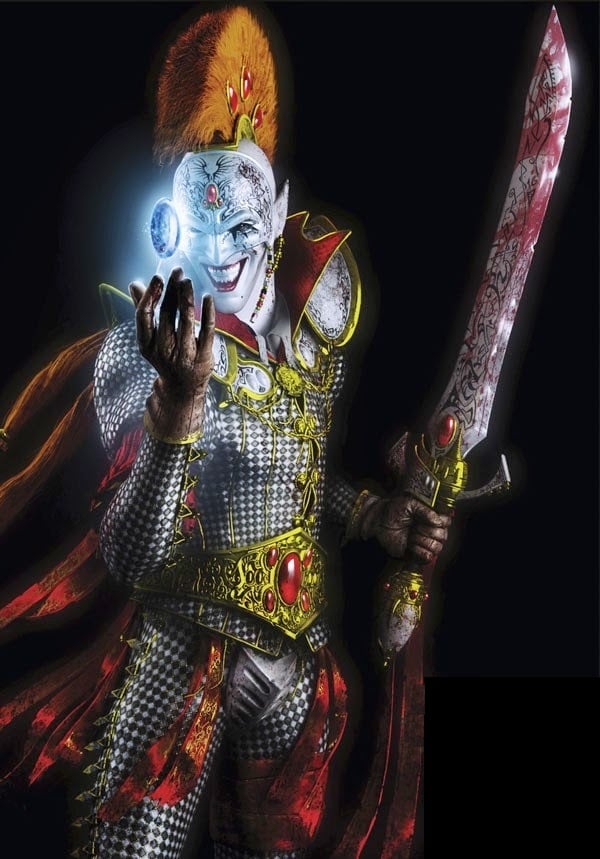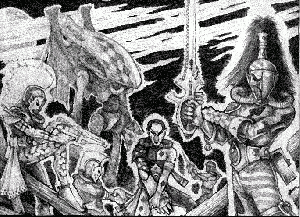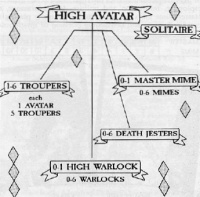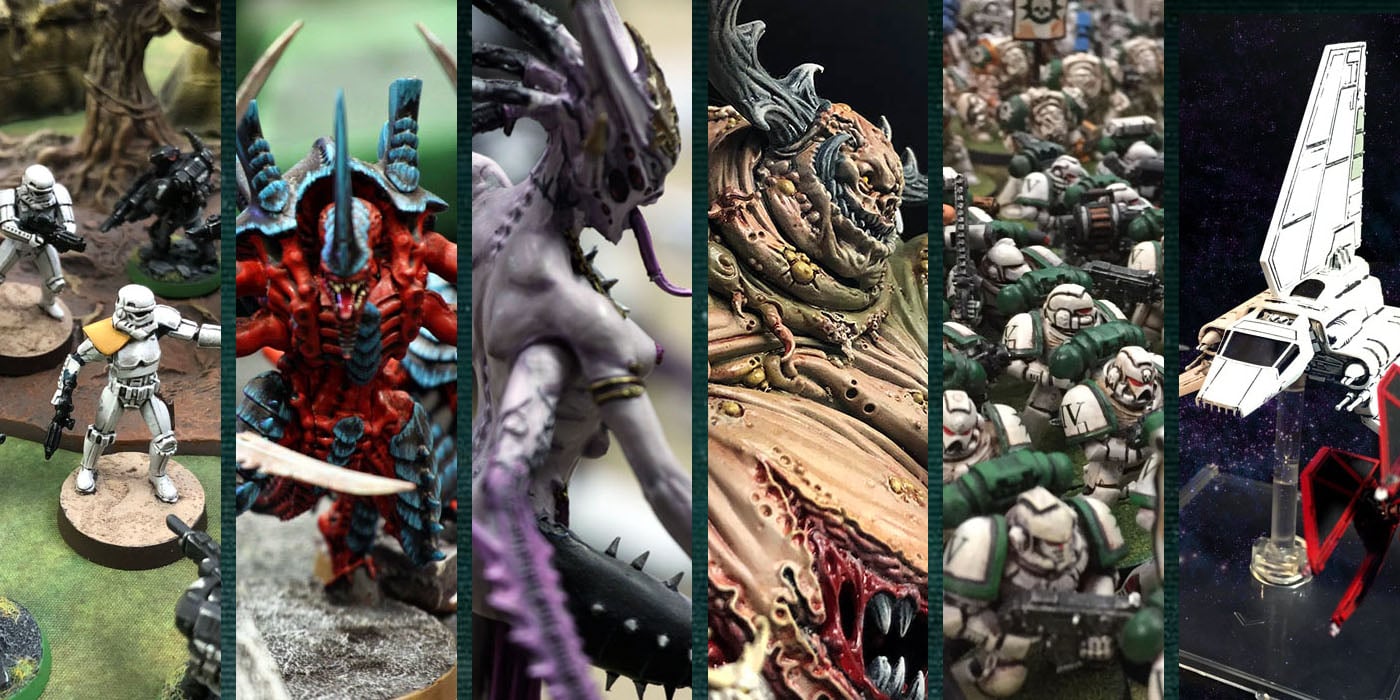40K Lore: Followers of the Laughing God
4 Minute Read
Jan 1 2015

Advertisement
Walking a tightrope between salvation and eternal damnation, the Eldar Harlequins are as feared as they are misunderstood…
lore via our sistersite Lexicanum
The Harlequins, or Rillietann, are a unique subset of the Eldar race, who split their time between being talented battlefield fighters and theatrical performers. They exist outside of normal Eldar society and hold no allegiance to any Craftworld, Kabal, or other form of authority other than to their own belief in the Eldar deity Cegorach, the Laughing God.
The Harlequins’ Role
Harlequins carry out several self-appointed duties, the most central of which is putting on theatrical performances of Eldar History; most notably the epic Fall of the Eldar. Their belief system is intertwined with the Fall, as Cegorach is one of the few Eldar deities reckoned to have survived it in some way. The Harlequins believe that his intrinsic light-hearted personality ensured he kept his distance from the depravity and corruption that became Slaanesh and that he survives to this day, often taking the form of a Harlequin himself – with those that meet him in this guise only becoming aware of his presence after he has left.
As the Eldar are a scattered race, Harlequins constantly tour the domains of their species (as well as other places; Harlequins believe other species should be told the stories of the Eldar as well) in their duty to perform. The dual-aspect of their nature serves them well when abroad in the galaxy, as Harlequins are reckoned to be the deadliest combatants of all the Eldar. Their acrobatic and deceptive skills, as well as their unique weapons and equipment, render them such mystifying and terrifying enemies that some of the less-developed races of the galaxy have incorporated them into their mythology as magical spirits or eldritch monsters.
The Harlequins are rumored to be among the few who know the location of the legendary Black Library and help protect it against unwanted intruders.
The Company
The overall leaders of the Harlequins are known as the Great Harlequins. Harlequins organise themselves into two standard units, the troupe and the masque. A troupe is a number of ‘ordinary’ Harlequins (referred to as troupers) led by a Harlequin Avatar. A masque is simply one or more troupes that are accompanied by specialist performers.
The Troupe
The Masque
The Soloists
The Dance Without End
“The Dance” is the greatest of the Harlequins’ works, telling of the Fall of the Eldar. It is performed only rarely as only a Solitaire (who often stay distant from even the rest of the Harlequins) is capable of playing the role of Slaanesh. Nine troupers dance the part of the old race, while three Avatars dance the part of the Fallen gods. As the dance reaches the climax of the Fall, the Solitaire leaps into view, appearing as Slaanesh. One by one, seven figures appear behind Slaanesh to mingle with the old race. First, four Mimes, appearing as daemons who pass their sensual and disturbing movements to the rest of the dancers. Secondly comes three dark figures, the Death Jesters, their suits displaying skeletons as they leap and slay among the Fallen gods, bringing their inert forms to the feet of Slaanesh. As the last god falls, the Warlocks emanate a psychic scream which echoes through the minds of the audience. The scream becomes a laugh of madness and depravity. As the High Avatar enters, there is within the laugh, another, ironic laugh. As the Laughing God, he strolls casually onstage, laughing at the cosmic folly of the Fallen. For a moment he is lost among Slaanesh’s servants, but leaps clear of their tumbling to face them. One of the dancers he drags free of Slaanesh, the writhing figures on the dancer’s suit dissolving and taking on the lozenge pattern of the Laughing God. The rest of Slaanesh’s servants fall or flee, at which point Slaanesh confronts the Laughing God. The battle which seems to go on forever, ends suddenly, unresolved.
Equipment
Harlequins posses several distinctive pieces of costuming/equipment, most notably their Agaith; false-faces. These masks come with various Eldar forms of auto-senses and respirators, and – with the exception of the blank Warlock masks – are highly ornamented. Avatars typically possess a more advanced version equipped with holo-generators that allows it to not only adopt numerous styles, but record and replay whatever the Harlequin has seen. This is normally used to replay the death-agonies of enemies… to other enemies. These morale-breaking devices are called marathags (“Face of Death”).
Even compared to other Eldar, Harlequins are graceful and lithe; they augment this natural prowess with so-called ‘flip-belts’ that generate a small anti-gravitic field around them and allow them to leap unnaturally high. They also wear holo-suits; sophisticated substitutes for armour that also aid theatrical performance. When set to battle-conditions, whenever the Harlequin moves, their image is shattered into a cloud of crystal shards that dance and swirl around with vigour proportional to the speed the Harlequin is moving.
Harlequins are also noted for their exotic and deadly combat weapons. The most gruesome of these is the Harlequin’s Kiss, which resembles a sharpened tube, tapering to a wicked point, fixed to a warrior’s forearm. The tube is actually filled with monofilament wires. When the Kiss is punched into a victim, the wires uncoil and flail around, slicing the victim apart from the inside.
So would you buy a new Harlequin army if GW released it?
Author: Larry Vela
Advertisement








